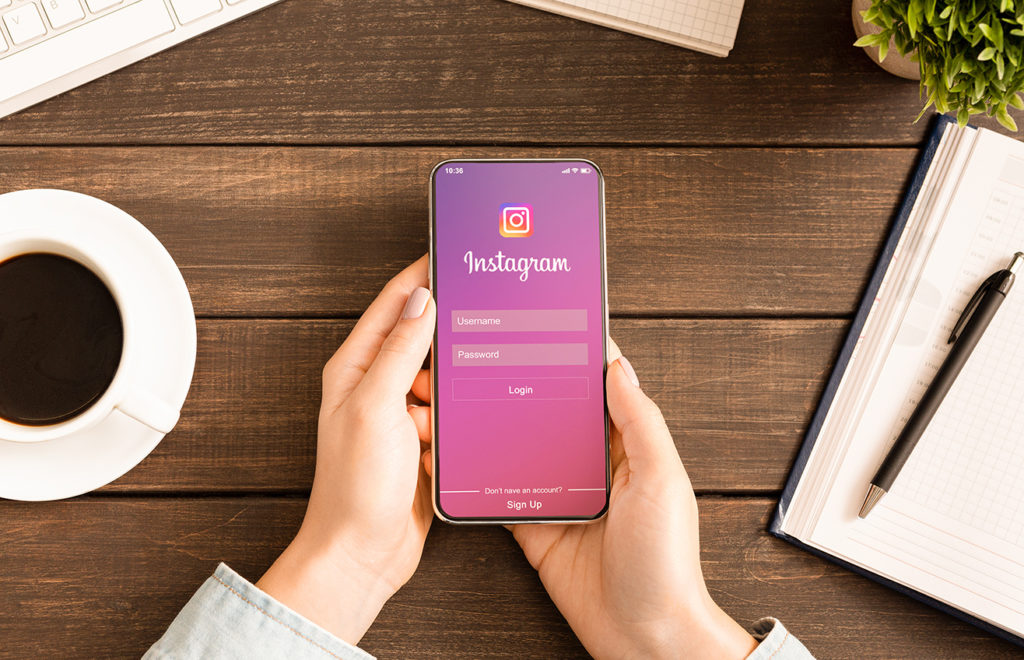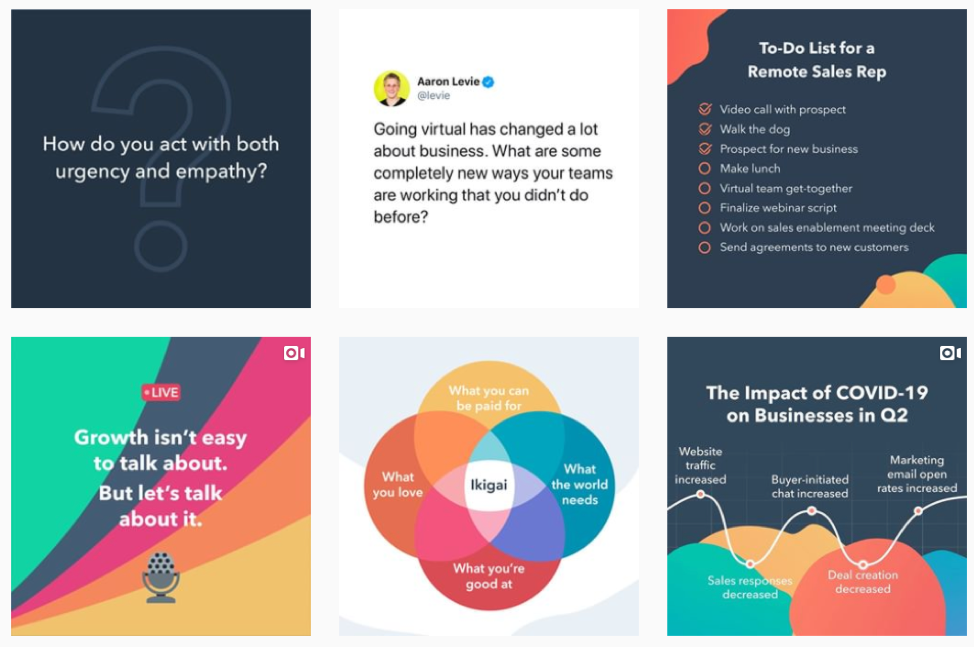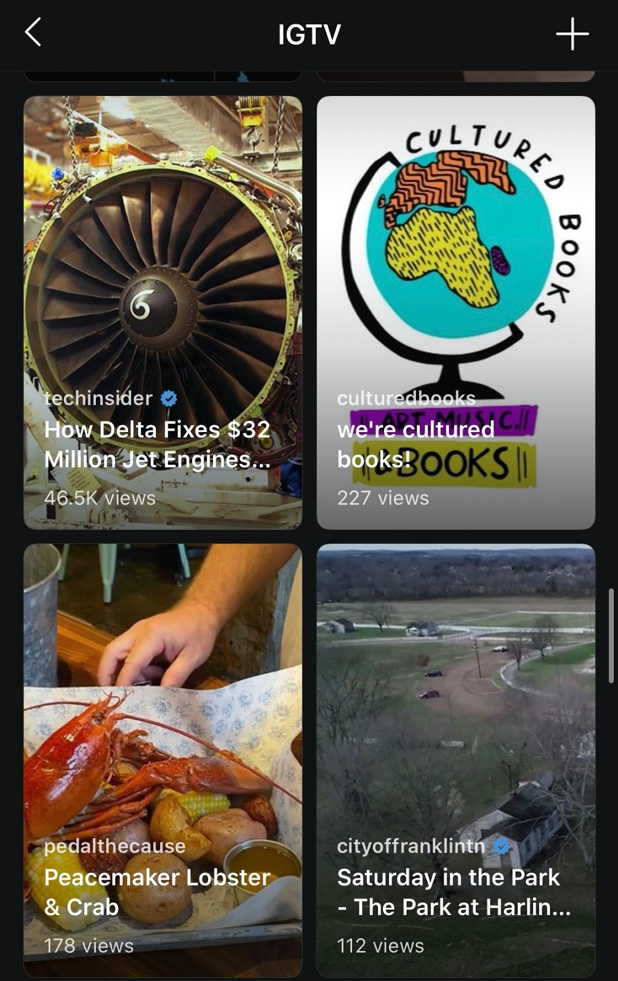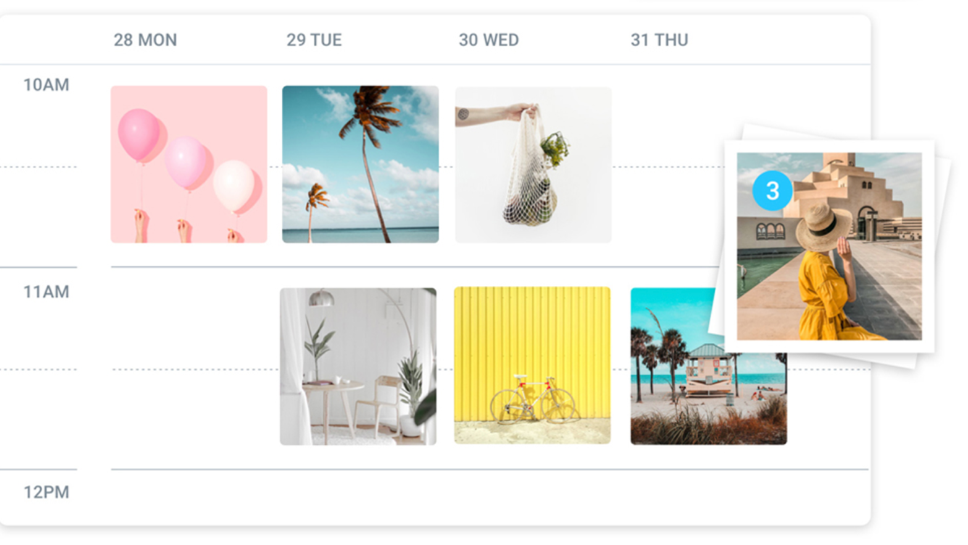6 Tips for Starting a Business Instagram

Should your business be on Instagram? If you’re just starting out with your company’s social media, Instagram is a great first step. This visual-centric platform allows you to quickly create a profile, discover other relevant accounts and begin building your library of posts.
While industries such as travel, beauty, fashion, health and wellness, music, photography and food do particularly well on this platform, virtually any business can find success on Instagram if they’re thoughtful about how they manage their profile. Here are six ways to do just that.
1. Make the most of direct access to your customers
One of the biggest benefits of being on this popular platform is the way you can connect with your customers through interactive posts, comment sections and direct messages.
Instagram hashtags also help you grow your audience. By including a few relevant hashtags in your posts, you can be found by interested people who follow those specific tags. While you can use up to 30 hashtags in a post and up to 10 in Instagram Stories, the pros recommend sticking to a maximum of 11 (though 1 to 3 is the most popular amount). Do your research, and take a look at the accounts of your competitors and other business Instagrammers you admire for inspiration.
2. Leverage organic and paid posts
One of the most efficient ways of growing your audience and increasing exposure is through a mix of organic and paid posts.
Organic posts are free content you create and publish on your profile via your feed or your story. This is a great way to build up your profile, show off your brand’s aesthetic and gain new followers. However, organic posts aren’t guaranteed to be shown to every single one of your followers. Various factors determine how your Instagram posts will find their way into your audience’s feed, from frequency of your posts to the specific content to shared followers.
An example of a sponsored post in the Instagram home feed. (via Instagram)
Sponsored or paid posts are a way to get more engagement and exposure for your content. You can do this by sponsoring one of your existing posts (which basically boosts the post and gets it in front of more eyes) or creating separate Instagram ads. Both of these promotions can aid in brand awareness, lead generation, traffic and conversions, according to experts.
What about cost? Influencer Marketing Hub reports that you can expect to spend between $0.20 and $2 CPC (cost per click) on a sponsored Instagram campaign.
3. Stand out by letting your brand’s personality shine
Instagram reports that about 90% of its 1 billion-plus users follow a brand on the platform. So how are you going to get the clicks and likes? Luckily, there are plenty of opportunities to get creative.
Instagram is 100% visual, so you want to make sure your content is eye-catching, well-produced and well-designed. Be mindful of your overall profile look — are your posts cohesive, with a similar style and color scheme, or do they look disjointed and unrelated?
Marketing platform HubSpot posts Instagram content with a similar look, color scheme and font choice so their overall profile looks consistent. (via instagram.com/hubspot)
Stories are a great way to communicate who you are. These are temporary posts you can create on your account that disappear within 24 hours unless you save them as a “highlight” on your profile. Stories offer many fun features to let your business’s personality shine. Think big: Post a photo or video and add a song, poll, GIF, question box or cool filter. Stories are also a great way to promote your in-feed posts to help them get the maximum amount of views.
4. Experiment with all the available features
Instagram is always introducing and updating features. When the app first launched, users posted only photos. Now you can post videos, Stories, broadcast live through your story with Instagram Live or post longer videos with Instagram’s standalone video application IGTV.
For businesses, Instagram has also added multifunction features. By making your profile a “business” profile, you can access analytics like post engagement, follower information and content shares. E-commerce brands can also take advantage of Instagram Shopping, which allows you to link directly to items featured in your posts. You can open your own Instagram Shop, provide live shopping, give personalized product recommendations, offer checkout and even link to e-commerce platforms you use.
Plus, it’s now easier than ever to partner with influencers to grow your reach. Influencers are active Instagram users with large social followings who sometimes partner with brands in exchange for goods or financial compensation. There are influencers for almost every major industry, as well as “microinfluencers” (those with 10,000 followers or less) who often have more engaged followers and are more affordable for small businesses.
A look at Instagram’s IGTV section of its app. (via Instagram)
5. Follow best practices for maximum success
Once you decide to go all-in on Instagram, make sure it’s worth your time and effort by following best practices listed very clearly on the app. Start with a consistent look across your posts, then make sure you have all the relevant info in your profile bio: your business name, industry category, a short blurb or mission statement and a link to your website.
This is a great opportunity to use a platform like Linktree, a free service that lets you create a “tree” of links so that when a visitor clicks your bio link, they’ll be routed to a list of relevant links of your choosing, instead of just one.
Later allows you to schedule multiple Instagram posts in advance. (via later.com)
Your posts will get more reach if Instagram recognizes that you post consistently. Create a schedule that you can follow, whether it’s daily or 1 to 2 times a week. To save time, use an online scheduling tool that will make it easy to set up multiple posts at one time. Later lets you schedule up to 30 posts a month for free, and most other scheduling apps offer free trials.
Sprout Social also recommends posting at peak times to get the most engagement. While this will depend on your audience and industry, it’s generally understood that weekday between 9am and 12 noon are ideal.
6. Get started with a real plan
Once you’ve got your strategy in place, it’s time to put the wheels in motion. Who’s doing what? Depending on the size of your team, determine details such as:
- Who will do the posting
- How often you’ll post
- What kind of content you’ll post and where you’ll seek post inspiration
- Who will review or approve the content before it’s posted
- How you’ll post (whether straight from the app or through a scheduling tool)
After you’ve published a few posts and built up your follower count by using hashtags and following clients or other relevant accounts yourself, you can go into the analytics tool to see which posts resonate most. From there, you can work to create more of that content, boosting successful posts, and continue from there.
So is Instagram for your business? Probably. There’s a good chance that your target audience uses Instagram. By being mindful of how you manage your account and having a solid plan in place, you can begin turning followers into leads and clients.



